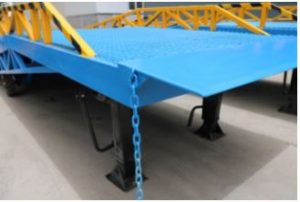Health and Safety Concerns in the US Cleaning Industry
The US Cleaning Industry is growing at a rapid pace, owing to the growth of industries such as healthcare. For instance, the employment of janitors and cleaners is expected to witness 6% growth from 2014 to 2024, a fact revealed by the Bureau of Labor Statistics, US Department of Labor, in its Occupational Outlook Handbook, 2016-17 Edition, Janitors and Building Cleaners.
Working in the cleaning industry can be a physically demanding task, especially while working outdoors, such as cleaning windows of high-rise buildings. Here’s a review some of the key health and safety concerns and what the Occupational Safety and Health Administration (OSHA) recommends to address these issues.
Safety and Heath Related Tips for the Cleaning Industry
- Personal Protective Equipment – OSHA recommends that all equipment for personal protection be safely designed and constructed. These must meet or be equivalent to the standards developed by the American National Standards Institute (ANSI). The guidelines recommend the equipment fit comfortably, something that can mean the difference between “safely covered” or “dangerously exposed.”
- Safe Work Practices When Using Chemicals – As per OSHA, it is the responsibility of the employer to train workers on safe practices while handling cleaning chemicals. Gloves act as good personal protective gear while dealing with chemicals. Natural latex gloves are recommended by experts at Signature Restaurant Supply, even while taking on messy cooking chores or at the time of cleaning and washing dishes.
- Preventing Falls – One of the leading causes of work-related injuries and deaths is falls. Employers in the cleaning industry must provision for equipment like safety harnesses and safety nets. Another step that can be taken to prevent falls is to keep the floors in the work areas clean and dry at all times.
- Protection Against Respiratory Issues – The use of respirators protects workers against work environments where there is lot of dust, smoke, vapors and allergens in the air. A respirator will either work by providing clean air from an external source or by filtering particles and chemically purifying the air. Some of these apparatuses such as a Self-Contained Breathing Apparatus (SCBA) and Powered Air-Purifying Respirator (PAPR) might require special training on how to use it safely.
- Ergonomics – A good work place manager will always focus on the ergonomics aspect of the cleaning process. There are many concern areas for a cleaning worker, from moving furniture to carrying buckets and many things in between. For instance, the more tools and supplies that are loaded on a cart or a barrel, the greater the amount of force needed to push it.
- Confined Spaces – Several areas, given the fact that they aren’t designed for humans, are termed as “confined spaces” and are occupational work hazards if adequate safety precautions are not taken. For someone in the cleaning industry, such areas could include tanks, vessels, pits, manholes, tunnels, large storage bins, etc. For instance, a blocked leachate line in a composting toilet, where liquid waste is backing into the waste vault, will be termed as an example of a “confined space” hazard for someone in the cleaning industry, according to The National Institute for Occupational Safety and Health (NIOSH) guidelines.
- Electrical Safety – For an all-important issue of electrical safety, OSHA recommends never to operate electrical equipment while you are standing in water. Only a qualified and authorized person must inspect the electrical wires. Fallen electrical lines must not, therefore, be handled by janitors and cleaners, and must be reported to the utility company.
Well, the guidelines are out there to be followed. It is the primary responsibility of the employers in the cleaning industry to ensure compliance and provide a safe and healthy working environment for their workers.
